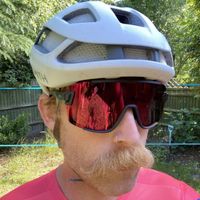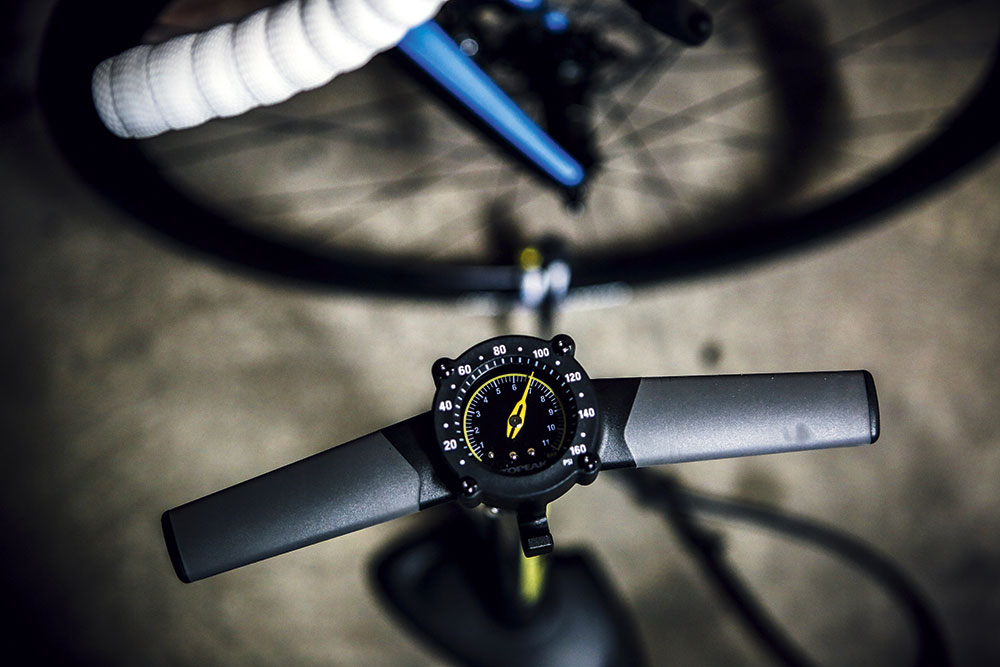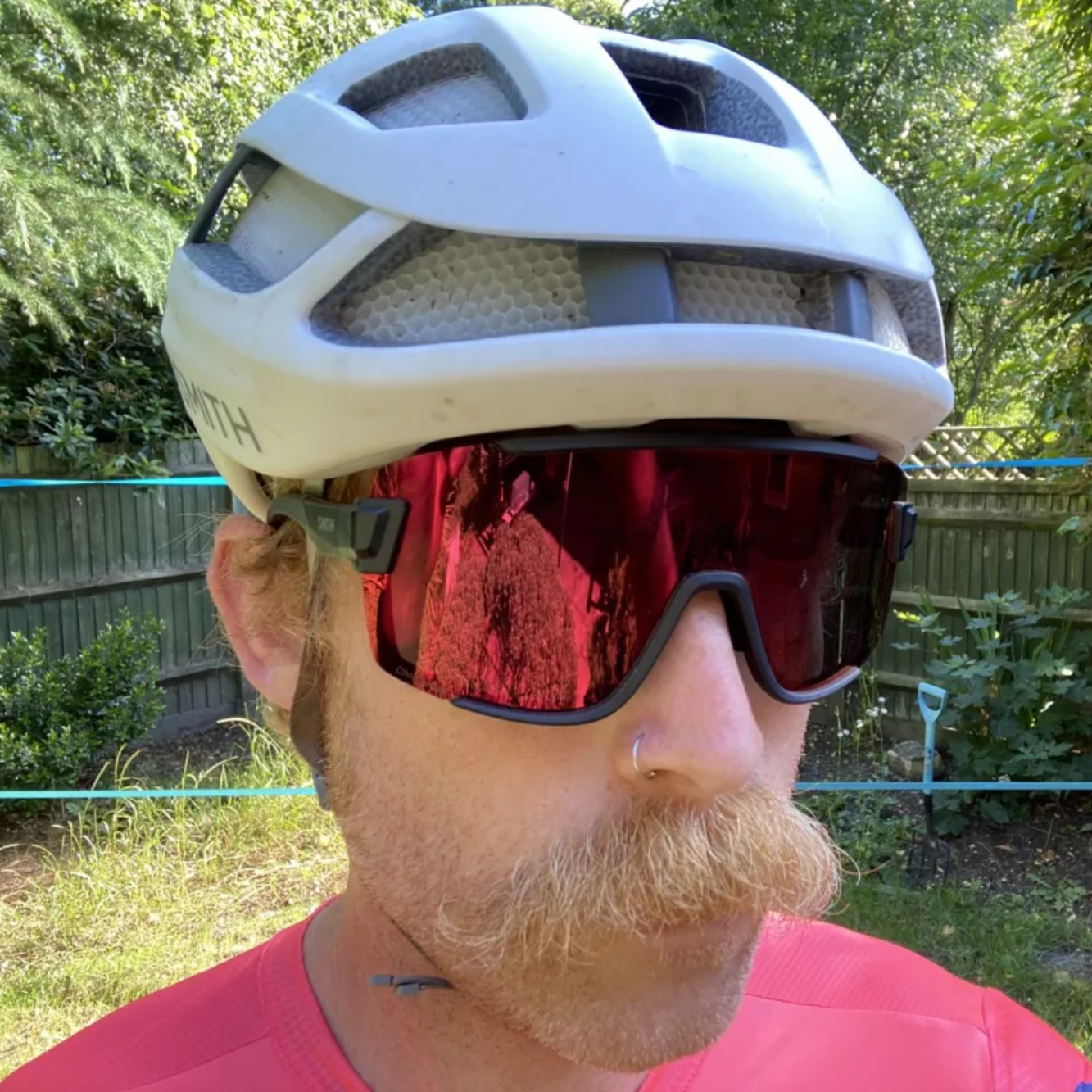What's the correct road bike tyre pressure?
Many factors dictate the ideal tyre pressure for you: including weight, weather and tyre width - we explain how to find the right PSI for your rubber


Given that your tyres are your only contact with the ground, it’s no surprise that they play a significant role in the quality of your ride. While the tyre’s width, tread pattern and overall construction all figure into the equation, it’s the pressure that you run them at that really impacts their performance.
Traditionally for road cyclists that meant inflating your 23 or 25mm tires to the maximum pressure - usually around the 120psi mark. However, times, and tires, have changed. And with it the advice on the best pressure to run them at.
The advent of disc brakes on road bikes meant wider tyres could be used. Wider translated to greater comfort without losing out on too much speed - in fact, over less-than-perfect surfaces wider tyres proved quicker.
Fast forward to today and most road bikes are designed to accommodate tyres of at least 28mm, with all-road and endurance models providing room for wider still. Add in tubeless technology and hookless rims and once sage advice on tire pressure is now as outdated as 23mm clinchers. So what is the right pressure for you?
Why is correct tire pressure important?
It’s probably more appropriate that we talk in terms of ‘ideal’ tyre pressures rather than ‘correct’, as tyre pressure is a moveable feast – a single tyre pressure is not a fix-all for every rider.
Tommaso Cappella, Vittoria’s Service and Quality Manager, and self-professed tyre pressure enthusiast, explains why pressure is so important, “the ideal pressure allows the tyre to sag properly, optimising the ground contact area, therefore, impacting manoeuvrability and performance.”
The latest race content, interviews, features, reviews and expert buying guides, direct to your inbox!
Finding the ideal pressure is also about finding a balance between reducing rolling resistance and increasing comfort.
Laboratory research using a smooth surface has proven that higher pressures result in a lower coefficient of rolling resistance (crr). However real-world road conditions are as far removed from the laboratory as to actually result in a cut-off point where higher pressures actually impede rolling resistance, due in part to an increase in energy loss as bike and rider are bounced around and break contact with the road surface. Lower tyre pressure allows the tyre to deform and roll more smoothly over broken roads.
What are the factors impact your ideal tire pressure?
According to Cappella, “the fundamental factor is the actual width of the tyre, let’s see at it as an air chamber - its size depends on the rim width and the tyre itself. As a simple rule of thumb, the wider the tyre the lower the ideal pressure.”
Your choice of tyre is also incredibly important, namely its specific construction.
A cotton casing deforms and behaves differently compared to nylon; also the TPI (Threads Per Inch) make a difference. A higher TPI implies the finer the yarn, making the tire feel smoother and roll faster.
Rider weight, normal riding position, riding style and road/atmospheric conditions all need to be considered too when calculating tyre pressure. A 100kg cyclist taking their bike to the smooth roads of Mallorca will want a higher tyre pressure than a 60kg rider covering the rutted, potholed lanes of the UK.
So where do I start?
Despite it sounding like an incredibly complicated formula, with too many variables and pitfalls, it can be quite easy to achieve a starting point from which to determine your ideal pressure.
A considerable amount of tyre and wheel manufacturers are beginning to introduce pressure guides or even easy-to-use online calculators to help you get started.
Zipp (SRAM) has a very detailed calculator that enables you to plug in a range of data in order to get your starting points, Vittoria likewise.
Tommaso has some simple advice to get started on your ideal tyre journey, “if you used to ride 116-130 psi (8-9bar) on a 23mm tyre you might want to drop the pressure in a 25mm tyre by 1bar (14 psi), dropping another bar for 28mm and going down to around 72psi (5bar) for a 30mm tyre.”
Tubeless?
One of the oft-touted advantages of going tubeless is the ability to run lower pressures.
Indeed this can be the case. Add to the fact that a tubeless system offers a lower Crr when run at the same pressure as a tubed tyre, thanks to the elimination of the friction between tyre and tube.
However, the pressure differences might not be as marked as you might think. Zipp recommends just 1.5 psi lower for a tubeless setup over inner tubes with a hooked tubeless rim. This does change when using a hookless tubeless rim when pressures can be reduced by nearly 6psi.
Running lower tyre pressures can mean that you’re more susceptible to pinch flats. Tubeless technology was designed to eliminate this issue - and with regards to pinched inner tubes, it did so. However, the hard leading edge of a carbon rim can still cause the same to happen to the sidewall of the tyre if the impact is severe enough. Likewise, tubeless tyres can ‘burp’ air. Here, excessive compression causes the seal to break and the tyre loses some air.
Tire inserts or liners were created to eliminate both issues while at the same time helping to protect the rim from strike damage. Proponents of inserts also say they add some comfort and shock absorbance. However, those less in favour of the technology will point to the added grams and ask, why spend a fortune on lightweight, aerodynamically enhanced rims if only to add rotational weight?
Another point worth making when it comes to tubeless tyres is the added care required to keep your tyres at their optimal pressure. Compared with tyres fitted with inner tubes, tubeless set-ups tend to lose air far more quickly. While you may go a few rides without checking your pressure if you use the former, the latter is best checked before each ride.
Hooked rims
With wider tubeless tyres came rims with wider internal widths. Hookless rims soon followed. Designed to best work at lower pressures they space the sidewalls of the tyres further apart, which is meant to provide greater support and create a more aerodynamic transition between tyre and rim.
While hookless rims do allow you to run wider tyres and lower pressures, they aren’t without their critics. A high-profile crash on the World Tour in early 2024 that was said to be caused by hookless rims and tubeless tyres brought potential safety issues regarding the tech to light.
However, ISO and ETRTO had already responded to the technology by recommending a maximum tyre pressure of 72 psi on hookless rims. In 2023 they amended their tire regulations, stating that, when used with hookless rims, a tire cannot deviate more than 2mm from its labeled size.
This means that for a hookless rim with a 25mm internal width, a 30mm tyre is the narrowest option as a 28mm tyre, typically designed around a 19mm internal rim width, will exceed this recommendation. In response, Zipp developed a 30mm tyre with Goodyear and teamed up with a number of tyre brands to ‘validate’ several 28mm tyres with Zipp hookless rims.
If it all sounds a bit confusing, the best advice is not to exceed any of the recommendations laid out by the ISO. Or, the other option, of course, is to stick with hooked rims.
Regardless of whether you're running hooked or hookless rims tire pressure calculators, such as those provided by Zipp, Enve and Vittoria are a good place to start. After that, it’s all about experimentation and tweaking, “I would suggest every rider spends some time experimenting with tyre pressures to find out the ideal,” said Capella.
We say
Tire pressure has such an impact on performance that it really should be something every rider takes time to consider. It’s not just a question of banging in the maximum any more in order for a tyre to feel fast anymore. With so much new tech on the market, from hookless rims to wide tubeless tyres for the road, alongside research data pointing to the positive impact on both rolling resistance and comfort of lowering pressures, we think it’s time all of us experiment with pressure.
James Bracey's career has seen him move from geography teacher, to MBR writer, to Cycling Weekly's senior tech writer and video presenter. He possesses an in-depth knowledge of bicycle mechanics, as well as bike fit and coaching qualifications. Bracey enjoys all manner of cycling, from road to gravel and mountain biking.
